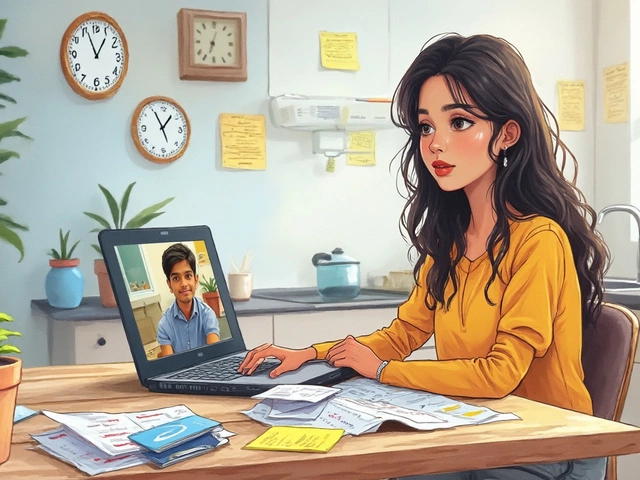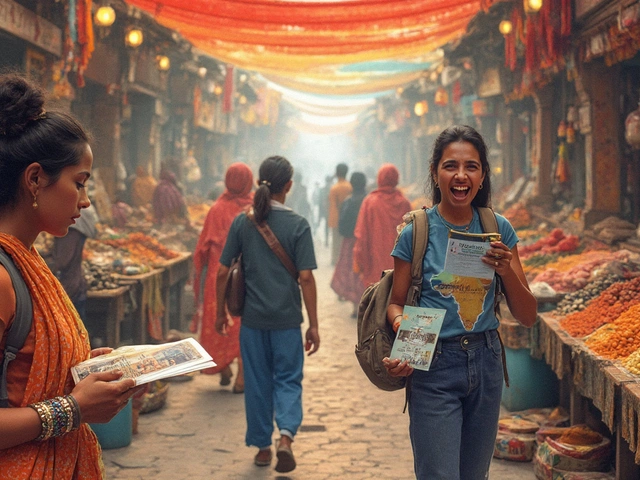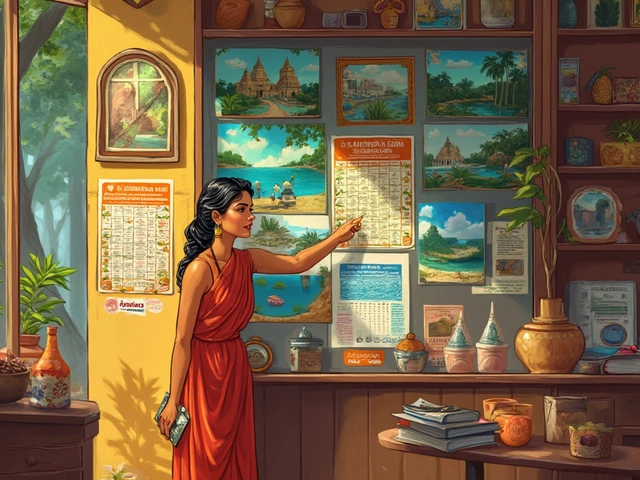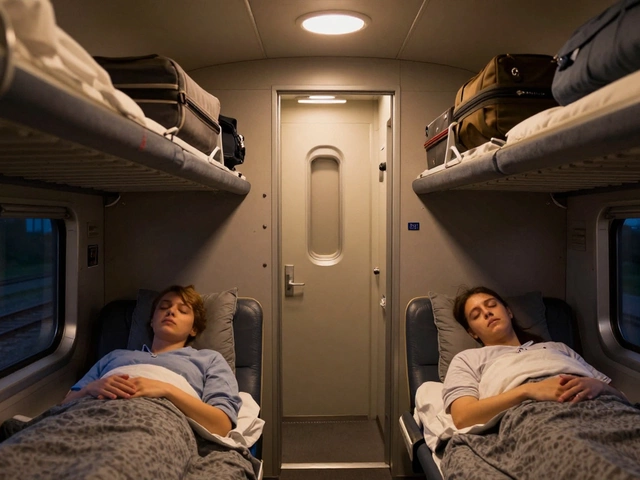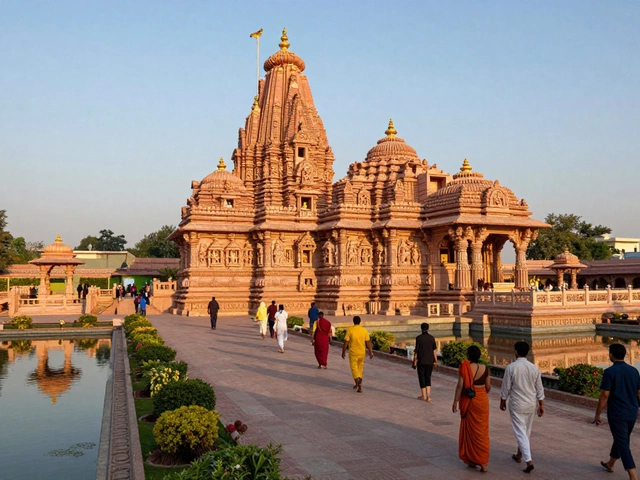The clock starts ticking the moment you dream up your India trip—so how long does it actually take to snag that Indian visa as a U.S. citizen? Here’s what you really need to know: it’s usually faster than you think, but there are a few details that can either fast-forward your plans or leave you sweating at the last minute.
If you’re planning a budget trip, you’ve probably noticed visa fees add up fast, and any extra rush service can burn a hole in your pocket. The regular e-visa process for U.S. citizens takes about three to five business days, but sometimes travelers get approval in just 24 hours. On the other hand, if things go sideways—maybe you upload a blurry passport scan or don’t catch a spelling error—don’t be surprised if you’re stuck refreshing your inbox for a week or more.
- Types of Indian Visas for U.S. Citizens
- Visa Processing Times: The Real Numbers
- Fast-Track Options and Tips for Speed
- Common Application Mistakes (and How to Avoid Them)
- Budget Traveler Hacks: Saving Time and Money
Types of Indian Visas for U.S. Citizens
If you’re a U.S. citizen and you want to visit India, picking the right visa is your first step. The two most popular options are the e-Visa and the regular Sticker Visa (stamped in your passport). Each has its own rules, costs, and processing times, so let’s break them down.
- Indian visa (e-Visa): This one’s everyone’s favorite for tourism, short business trips, and even short medical visits. You apply online, skip the consulate, upload your docs, and get it by email. Easy and pretty fast. The e-Visa is valid for up to 30 days (single entry), one year, or five years (both allow multiple entries but have stay limits for each visit).
- Regular Sticker Visa: You’ll need this if you want to stay longer or visit for work, research, or journalism. You have to mail in your real passport or visit an Indian consulate/visa center. It’s slower and pricier, but you can get longer stays.
Here’s a quick cheat sheet to compare your options:
| Type | Application Method | Typical Use | Max Stay per Visit | Validity |
|---|---|---|---|---|
| e-Visa (Tourist) | Online | Tourism, friends/family, casual business | 30, 90, or 180 days (depends on category) | 30 days / 1 year / 5 years |
| e-Visa (Business) | Online | Short business events | 180 days | 1 year |
| Sticker Visa (Tourist/Other) | Consulate/Center | Longer visits, complex reasons | Up to 180 days | Up to 10 years (varies) |
Almost all U.S. tourists go for the e-Visa—it’s fast, all done online, and you don’t hand over your passport. But if you’ve been to countries like Pakistan or your ancestry is Indian, rules can get trickier and might push you towards a sticker visa.
Quick tip: There’s no visa-on-arrival for U.S. citizens in India. Also, don’t bother showing up to the airport without your visa approval, because you’ll just get sent home.
Visa Processing Times: The Real Numbers
Let’s cut straight to the details. U.S. citizens have a couple of main options for getting an Indian visa: the e-Visa or the regular paper visa. How fast you get approved depends on which one you choose, how organized your documents are, and a little bit of luck with timing.
The Indian visa process is mostly online these days, especially the e-Visa, which is what most tourists and budget travelers use. The Indian government says it takes three to five business days for e-Visa approvals. But if you double-check Reddit or recent travel forums, lots of travelers report getting approval in just one to two days—sometimes even within hours. Still, don’t count on instant results every time, especially if you’re applying close to big Indian holidays or during peak travel seasons like December and January.
| Visa Type | Average Processing Time | Cost (Standard) |
|---|---|---|
| e-Visa (Tourist) | 1-5 business days | $25 - $100 |
| Regular Paper Visa | 5-15 business days | $150+ |
| Express/ Rush Option | 24-72 hours | Extra $50-$100 |
Paper visas used to be the classic route, but they’re honestly a hassle unless you’re planning to stay longer than 180 days or have special needs (like research, business, or student programs). Regular processing for the paper visa can stretch from one to three weeks, especially if your local Indian consulate is bogged down or if you’re stuck mailing in your documents.
Here are the key things that can speed up or slow down the process:
- If your application photos are the wrong size or out of focus, expect delays.
- Applying on weekends or Indian public holidays? Processing pauses until the office opens again.
- The e-Visa system sometimes gets jammed before major festivals like Diwali or Holi, with tons of last-minute travelers.
Quick tip: Most people get their e-Visa approval email before the official “processing deadline,” so keep checking your inbox and spam folder. If you haven’t heard back after five business days, it’s smart to check your application status online or reach out for help rather than just waiting it out.
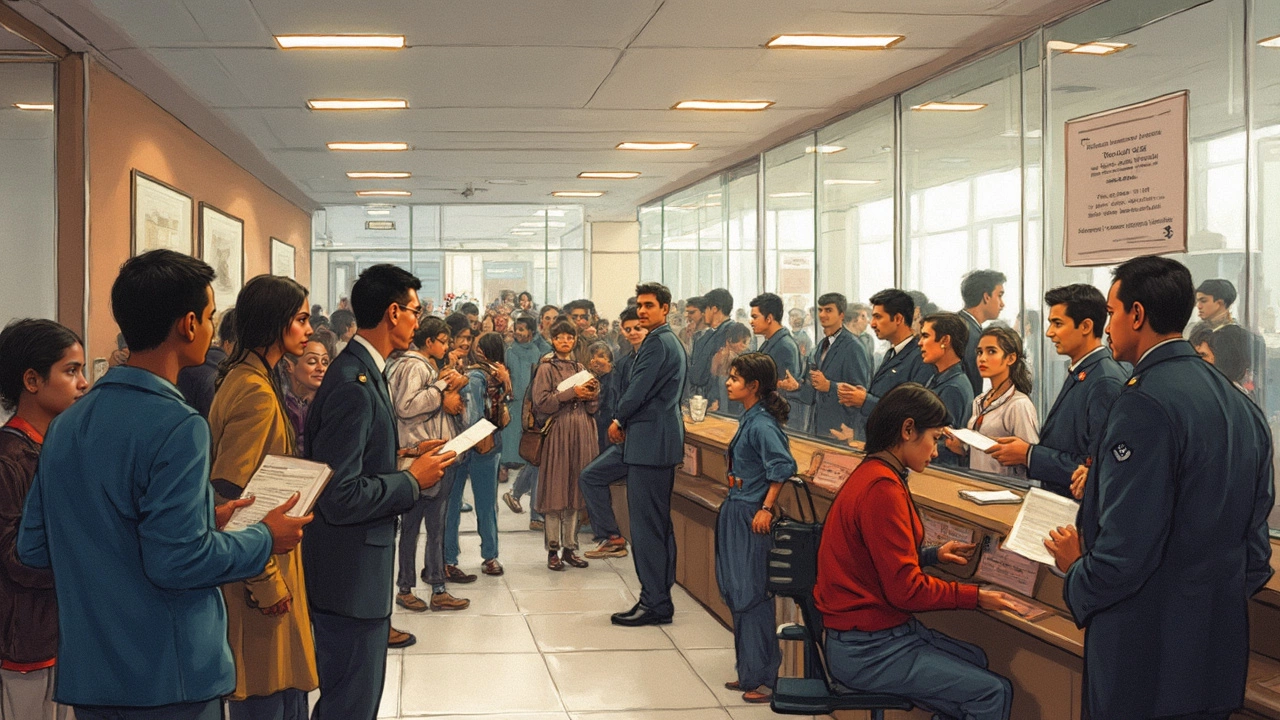
Fast-Track Options and Tips for Speed
If you’re in a crunch and your flight to India is coming up fast, you don’t have to panic. U.S. citizens have a few ways to speed up their Indian visa process. India’s e-visa system is built for quick approvals, but you’ve got to play it smart if you want to cut out the waiting game.
The fastest bet is the Indian e-Visa. Most travelers get a response in 3-5 days, but some land their approval in just a day. There’s even a paid urgent processing option with some third-party agents and visa companies—these can turn your application around in as little as 24 hours, sometimes even on weekends. Be careful, though: the official Indian government website (indianvisaonline.gov.in) doesn’t offer a “rush” button, so third-party services charge for hand-holding and paperwork checks, not for special government handling.
If you’re totally last-minute, here’s what to do for the fastest shot:
- Apply online before noon (India Standard Time): Applications logged early in the day get processed faster.
- Use a clear, recent photo and a crisp passport scan: The system rejects grainy or crooked images. Any hiccup here usually adds days, not hours.
- Check your email hourly for follow-ups: Sometimes the visa team requests small fixes or more info. The sooner you reply, the sooner you move forward.
- Triple-check your details: Any mistake—even a missing middle name—can slow things to a crawl.
Third-party agents can help you dodge common errors and babysit your application, but they’ll charge a service fee (often $70–$120 extra on top of the regular e-visa fee). Some seasoned budget travelers skip agents and still get quick results, especially when they follow the basics above.
Check out how the typical processing times stack up:
| Option | Average Time | Fee (USD) | Notes |
|---|---|---|---|
| Regular e-Visa (Official Site) | 3-5 business days | 25-80 | Cheapest, no special handling |
| Expedited via Third Party | 24-48 hours | 95-200 | Service fee on top of visa fee |
| Normal Paper Application | 7-10 business days | About 150 | Through embassy/consulate, not recommended for urgent travel |
One more tip: Skip paper applications if you’re in a hurry. They’re slower, require mailing documents, and don’t offer email updates.
Common Application Mistakes (and How to Avoid Them)
You’d be surprised how many travelers end up in visa limbo over tiny slip-ups. Most delays when applying for an Indian visa come from mistakes that are totally avoidable if you know what to look for.
- Blurry or Cropped Documents: The Indian government needs a clear, color scan of your passport. If your photo looks fuzzy or if the edges are cut off—even a little—they’ll kick your application back. Use good lighting and double-check before uploading.
- Mismatched Information: Your name, passport number, and birth date must match your passport exactly. Extra middle names or typos are one of the biggest reasons for rejection. Cross-check every field on the form.
- Wrong File Formats or Sizes: The passport scan and personal photo have to be in JPG or PDF format, and under the size limit (usually 1MB). Large files or the wrong format can block your submission.
- Unpaid Fees: Visa payment bounces often. Stick to popular credit cards and always wait for payment confirmation. If the payment doesn’t go through, your application doesn’t move forward.
- Incorrect Visa Type: Applying for the wrong visa—like a tourist visa for business travel—will send you right back to the start. Double-check your trip purpose before submitting.
Just so you know how much wasted time these mistakes cost, here’s how the numbers stack up:
| Mistake | Extra Waiting Time (avg.) | % of Applicants Affected |
|---|---|---|
| Blurry Passport Scan | 3-5 Days | 18% |
| Mismatched Personal Info | 2-4 Days | 15% |
| Payment Errors | 2 Days | 11% |
| Wrong Visa Type | Start Over | 7% |
The best move? Triple-check all your numbers and names. Preview your uploaded files and zoom in to spot anything blurry before you hit submit. For payments, keep screenshots—just in case something goes sideways. And if you’re unsure which visa you need, ask a friend who’s done it or hit up travel forums before you apply. Getting these details right will save you days of waiting—and a ton of stress.
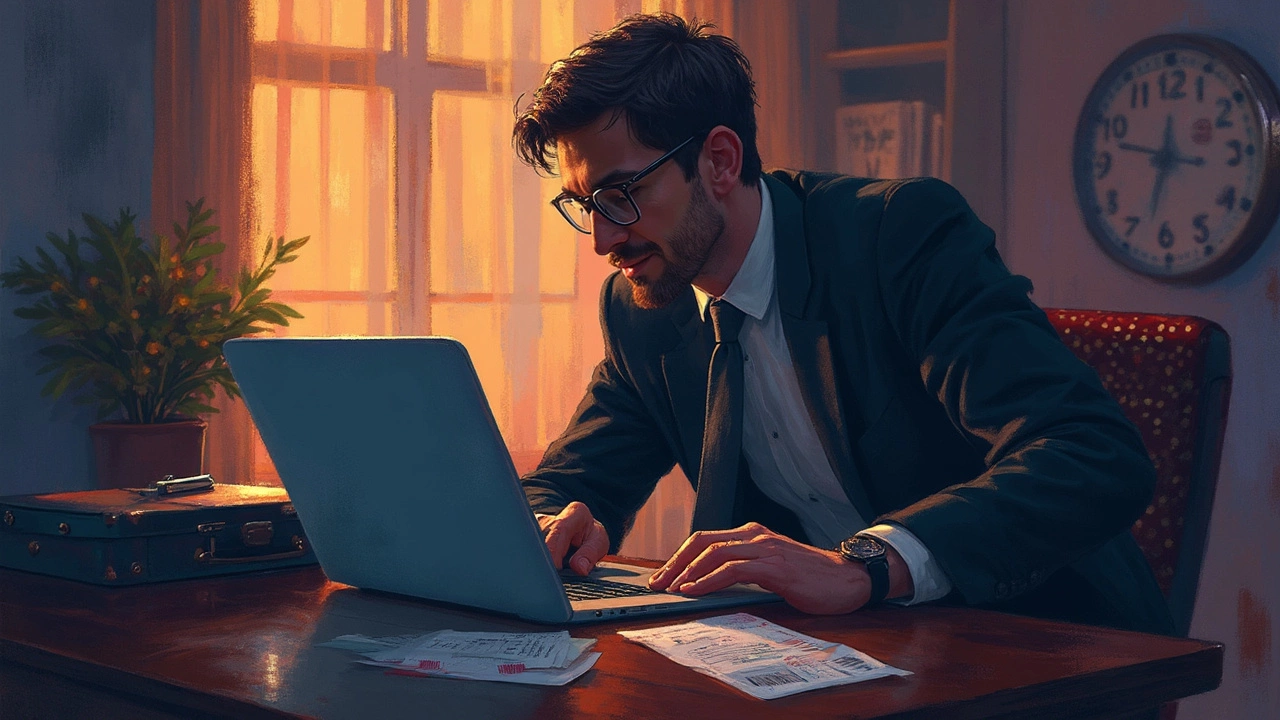
Budget Traveler Hacks: Saving Time and Money
If you're hoping to explore India without spending a fortune on visas, there are real ways to save both cash and headaches. Even a last-minute trip doesn’t have to break the bank—you just need to dodge the common money traps and timing mistakes.
First, always apply for the Indian visa through the official Indian Government portal (https://indianvisaonline.gov.in), not a third-party service or agency. Those flashy sites that promise “VIP processing” or “guaranteed approvals” usually charge $40 to $100 extra for the same process you can do yourself in 15 minutes. The official e-visa fee for U.S. citizens is about $25 to $80, depending on your visa type and season, but extra middleman fees are pure waste.
| Visa Type | Fee (USD) | Processing Time (Business Days) |
|---|---|---|
| Tourist (30 days) | $25 | 3-5 |
| Tourist (1 year) | $40 | 3-5 |
| Tourist (5 years) | $80 | 3-5 |
You can also time your application for smoother sailing. Submit your form at least one week before your trip—don’t wait until the weekend, because government offices in India don’t process visas on Saturdays or Sundays. Holidays will set you back even further. If you cut it too close and need the visa ASAP, you might be tempted to pay for unofficial “rush” services. Remember: the official site does not offer faster processing for an extra fee, and expedited services are risky and expensive.
Need to shave a few dollars more? Skip the print shops and classic passport photo booths. Instead, take your own passport photo using a free online tool that resizes it to the right specs. As long as the image is clear, recent, and meets the size requirements listed on the government portal, you’re good—and you just saved another $10 to $15.
- Double-check your information before submitting. Typos are the quickest way to delay your visa, sometimes by days.
- Use a debit card with no international transaction fees for payment. Some budget banking apps refund those fees automatically.
- Download your visa approval PDF and save it in multiple spots—email, phone, cloud—to avoid printing issues at the airport.
To keep things smooth at arrival, bring both a digital and printed copy of your visa. Some airlines ask at check-in, and not every airport in India is ready to go fully paperless. A busted phone shouldn’t stall your adventure.
It’s all about avoiding waste—time, money, and stress. Stick to these hacks, and your Indian visa will be one of the easiest parts of your budget travel planning.

